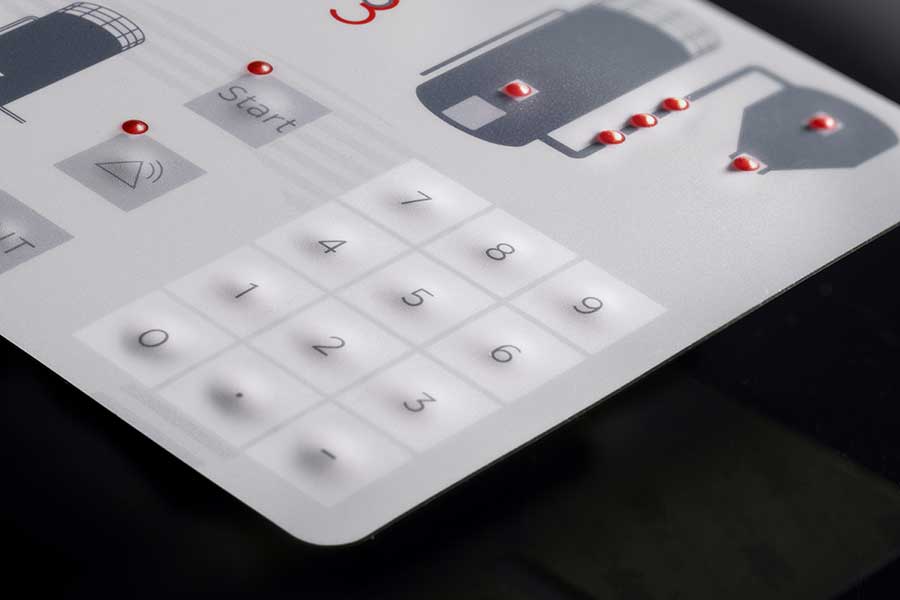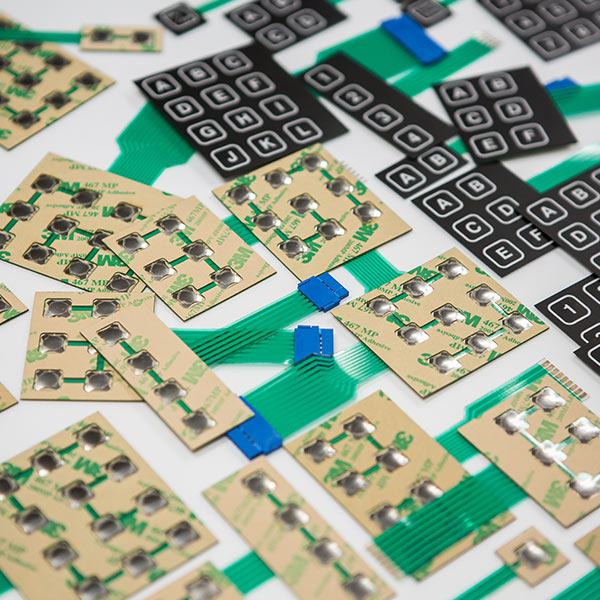Why Membrane Switches Are Preferred for Their Thin and Compact Layouts
Why Membrane Switches Are Preferred for Their Thin and Compact Layouts
Blog Article
Discover the Future of Control Interfaces: Why Membrane Layer Changes Are Gaining Appeal
As markets increasingly focus on straightforward and effective control interfaces, membrane layer switches are arising as a compelling remedy that integrates functionality with layout flexibility. Their strength and compact nature make them specifically fit for a variety of applications, from health care to consumer electronic devices. With the increase of smart innovation and sustainability issues, the capacities and developments bordering membrane switches over warrant better examination. What certain advantages do they use that could redefine our interactions with innovation in the coming years?
Understanding Membrane Layer Buttons
Membrane switches are essential parts in modern-day digital tools, offering as user interfaces in between customers and equipments. These switches are composed of multiple layers, typically including a visuals overlay, a spacer layer, and a circuit layer.

Durability is an additional essential attribute, as membrane buttons can be created to resist ecological elements such as dampness, dust, and chemicals. This resilience makes them ideal for applications in extreme conditions. Overall, recognizing the structure and feature of membrane switches is critical for valuing their role in the development of customer interfaces in today's technology-driven world.
Trick Advantages of Membrane Layer Buttons
Offering an array of benefits, membrane layer buttons have become a recommended choice in different applications (Membrane Switches). One of the main benefits is their compact layout, enabling makers to optimize area in devices without jeopardizing functionality. Membrane buttons are lightweight, which is specifically valuable in portable digital devices

Additionally, these switches supply superb durability. Built from versatile products, they are immune to dirt, dampness, and a selection of ecological factors, making them suitable for severe conditions. This resilience typically equates right into a much longer life-span contrasted to standard mechanical buttons.
In addition, membrane layer switches permit smooth assimilation of graphics and icons, supplying visual versatility and improving user experience. Customization alternatives are extensive, enabling brand names to develop one-of-a-kind user interfaces that line up with their product identity.
The level surface of membrane layer changes protects against the build-up of dust and grime, making them excellent for hygienic settings. Membrane buttons are cost-effective, as they can be created in high quantities at lower prices, making them accessible for a large array of industries.
Applications Throughout Industries

A myriad of industries are progressively adopting membrane layer buttons due to their convenience and functionality. These manage user interfaces are particularly widespread in the automotive market, where they are made use of in dashboards and infomercial systems, offering a streamlined and user-friendly interface. In the medical area, membrane layer changes assist in the procedure of diagnostic devices and person monitoring systems, guaranteeing dependability and ease of usage in critical circumstances.
Furthermore, the customer electronic devices sector take advantage of membrane switches in gadgets such as microwaves and push-button controls, permitting structured layout and boosted resilience. Membrane Switches. The aerospace industry likewise makes use of membrane layer buttons in cabin controls, where room restraints require portable and reliable layout remedies
In addition, the commercial field uses membrane layer buttons in equipment control board, using durability against severe atmospheres and guaranteeing operational efficiency. Retail environments have embraced membrane buttons in point-of-sale systems, boosting customer communication while preserving aesthetic charm.
Design Trends in Membrane Buttons
Advancing together with technological developments, style trends in membrane buttons are significantly concentrated on improving user experience and aesthetic appeal. Modern membrane layer buttons are being created for simplicity and intuitive use, permitting individuals to browse interfaces easily. This change towards user-centric design stresses tactile responses, making sure that users obtain instant confirmation of their activities.
In addition, adjustable graphics and colors are coming to be common features in membrane layer switch layouts. This versatility allows makers to create tailored interfaces that align with branding and details individual demands. The consolidation of backlighting is an additional popular fad, as it not only boosts visibility in low-light problems yet likewise includes a visually striking aspect to the total style.
Furthermore, the pattern in the direction of thin and light-weight products is gaining grip, enabling sleeker layouts that can seamlessly incorporate right into different applications. This shift not hop over to these guys only boosts looks but likewise adds to the total functionality and toughness of the buttons. Green products are increasingly being utilized, showing a wider motion in the direction of sustainability in item layout. These layout fads jointly emphasize the additional reading expanding importance of combining form and function in the development of membrane switches, eventually enhancing the individual experience.
Future Outlook for Control Interfaces
The future of control interfaces is poised for significant change as arising modern technologies remain to improve customer communications throughout different devices. The integration of innovative products, such as versatile electronics and conductive inks, will certainly improve the flexibility and functionality of membrane layer buttons, making them increasingly adaptable to an array of applications. Furthermore, the rise of the Internet of Points (IoT) will certainly drive demand for even more intuitive, straightforward user interfaces that can perfectly incorporate with wise gadgets.
As synthetic intelligence and equipment discovering progress, manage user interfaces will likely incorporate even more tailored functions, allowing customers to communicate with devices in means that are tailored to their choices and practices (Membrane Switches). This shift towards user-centric layout will place membrane buttons as a principal out there, especially in sectors like health care, automobile, and customer electronics
Moreover, the promote sustainability will motivate suppliers to explore eco-friendly materials and production techniques, making certain that the future of control interfaces lines up with ecological factors to consider. Overall, as innovation remains to breakthrough, membrane switches will certainly become progressively innovative, leading the way for innovative control services that improve individual experience and operational effectiveness throughout varied markets.
Verdict
In verdict, the enhancing adoption of membrane layer changes highlights their significance in the advancement of control interfaces. As user-friendly user interfaces become crucial in the context of IoT and AI improvements, membrane buttons are positioned to play a crucial useful content function.
As industries significantly prioritize reliable and user-friendly control user interfaces, membrane buttons are emerging as an engaging solution that integrates functionality with style adaptability.Toughness is another crucial feature, as membrane layer switches can be developed to stand up to environmental aspects such as moisture, dirt, and chemicals.Evolving together with technical developments, layout trends in membrane layer buttons are increasingly concentrated on boosting individual experience and visual allure. Modern membrane buttons are being made for simplicity and instinctive use, enabling users to navigate interfaces easily. These layout trends collectively highlight the expanding importance of integrating kind and feature in the development of membrane buttons, inevitably enriching the user experience.
Report this page